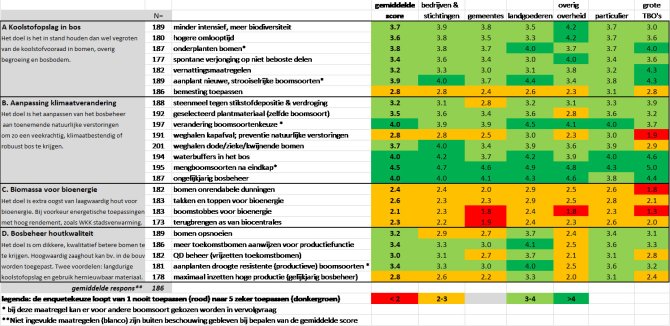
News
Forest Owners Increasingly Impacted by Climate Change; Measures Needed Soon
A survey of Dutch forest owners has shown that 80 percent of them are increasingly impacted by natural disturbances linked to climate change, such as drought, storm damage, and insect damage. This is why many forest owners are considering climate-smart changes to their management. However, this requires large investments such as planting climate-resistant species.
At the start of 2020, researchers from Wageningen University & Research (WUR) conducted a large-scale survey among Dutch forest owners. The objective was to gain insight into the wishes and expectations regarding climate-smart forest management and how it relates to the current support provided through the SNL grant scheme (box 1). The survey shows that many forest owners and managers are considering changing to different types of forest management where a climate-smart variation is available.
More Natural Disturbances
Of the 241 respondents, nearly 80% said that they have had to manage an increasing number of natural disturbances over the past ten years. Drought in particular was mentioned often. Many forest owners also experienced increased storm damage, extreme temperatures, intense rainfall, and damage caused by insects (bark beetles, oak processionary moth) and fungal diseases (ash dieback). It was largely owners with spruce, oak, and ash trees who indicated that this was a major problem. Owners feel forced to change their forest to keep it alive under changing circumstances.
24 Measures for Climate Mitigation and Adaptation
Forest owners were presented with 24 management measures for climate mitigation and adaptation, ranging from less intensive management to total focus on increased production of timber, and they were asked which ones they thought would be essential. The owners primarily saw the need to take measures that were focused on climate adaptation. They had a strong preference for measures that maintained or increased the carbon storage in the trees and the soil, such as planting new tree species with high litterfall (box 2).
Depending on the type of owner, a number of measures in the “improve timber quality” package of measures also scored high. This management is aimed at sawable and higher quality trees, where the harvested timber can be used for building houses and furniture etc. Nearly all the management measures for bio energy scored low – forest owners were less inclined to harvest additional timber and to sell it for district heating, for example.

Forest Strategy
Lastly, the study looked into how important forest owners thought it was to introduce new management measures, and within what time period. According to most (64%) it was essential to take climate-smart measures. A large group (46%) also indicated that this was necessary in the short term. These climate-smart forest management measures also fit in with the Forest Strategy, but require major investments. The implementation of the forest strategy includes a once-off stimulus for natural forests on sandy soil only. In the survey, owners indicated that they needed this stimulus for a multi-functional forest as well: these are forests used for both recreation and production of timber.
More information is available in the November issue of Vakblad Natuur Bos Landschap (Dutch only).
SNL Grant Scheme
SNL stands for Subsidiestelsel Natuur en Landschap (nature and landscape grant scheme). This is government funding for the conservation of nature and forest in the Netherlands. It supports the forest owner in managing the different functions of the forest, such as nature conservation and recreation. Dutch forests have been divided into natural forests and forests with a multifunctional production role. The combined forest acreage of the respondents consisted of 41% SNL natural forest, 43% SNL multifunctional forest, 2% SNL cultural and historical forest, and 14% non-subsidised forest. For natural forest, an owner will receive about 100 euros per hectare per year, for a multifunctional forest, this is 27 euros.
Tree species with high litterfall
Tree species with high litterfall are deciduous and coniferous trees that shed their leaves and needles annually (litter). On the already poorly acidified forest soils, the leaf acids lead to further acidification. By planting other species such as linden or maple, alkaline material from the deeper soil is brought up to the top soil by the litter. This improves the soil.